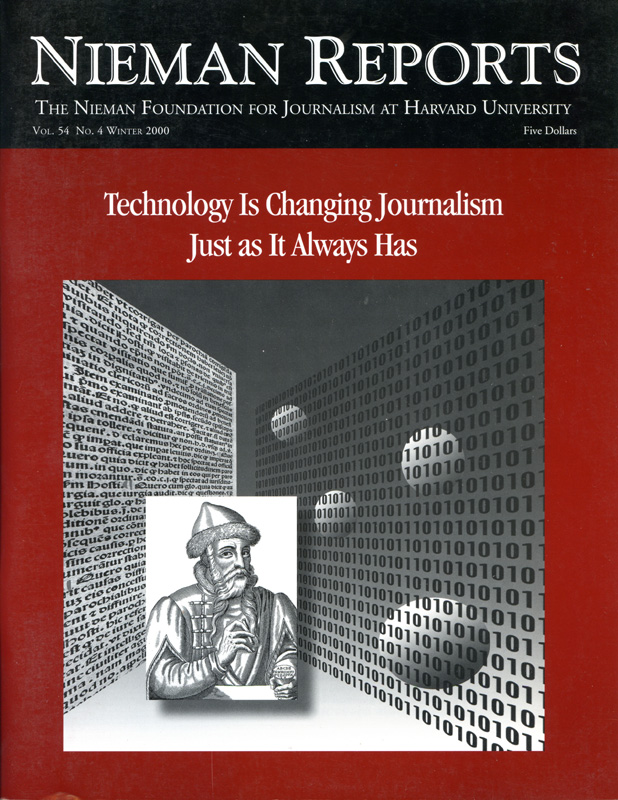Our journey into the digital future begins with an essay by Tom Regan, associate editor of The Christian Science Monitor’s Web site. His advice: Remember that technology is changing journalism, “as it always has;” wireless is the next publishing realm, and the Web—as a news distribution method—is (almost) already dead. Elizabeth Weise, who has reported on the Internet since 1993, contends the technology beat is changing. “Those of us who weren’t business reporters don’t want to become them, and increasingly that’s where this train is headed,” she writes. Nancy Hicks Maynard, whose book “Mega Media” explores the digitization of news, observes that “much about the ways we define, gather and produce news will have to change, too.” Adam Liptak, senior counsel at The New York Times, describes how technological changes might imperil “the secrets, status and swagger of the American institutional press.” Dan Rather, managing editor of CBS Evening News, urges journalists to “stand guard” against the lessening of news standards and the “balkanization of our society” when news of civic import is not commonly shared. Lee Rainie, director of the Pew Internet & American Life Project, weighs the pluses and minuses of news on the Web and finds “the Internet has been good for news….” Arthur E. Rowse, author of “Drive-By Journalism,” worries about how powerful media companies already dominate news on the Web. From the Annenberg Public Policy Center comes an article predicting greater integration of TV and Web coverage the next time Americans go to vote. Kenny Irby, visual journalism group leader at The Poynter Institute, reflects on the impact technology has on photojournalism and argues for preserving the still photograph. Patti Breckenridge, assistant managing editor at The Tampa Tribune, describes what it will take to be a journalist in the 21st century. (A hint: different qualities and skills than what most journalists possess today.) And four journalists offer opinions and evidence about e-mail interactivity with readers.
Winter 2000: Peering Into the Digital Future Introduction
Our journey into the digital future begins with an essay by Tom Regan, associate editor of The Christian Science Monitor’s Web site. His advice: Remember that technology is changing journalism, “as it always has;” wireless is the next publishing realm, and the Web—as a news distribution method—is (almost) already dead.
Technology Is Changing Journalism Just as It Always Has
Our journey into the digital future begins with an essay by Tom Regan, associate editor of The Christian Science Monitor’s Web site. His advice: Remember that technology is changing journalism, “as it always has;” wireless is the next publishing realm, and the Web—as a news distribution method—is (almost) already dead.



